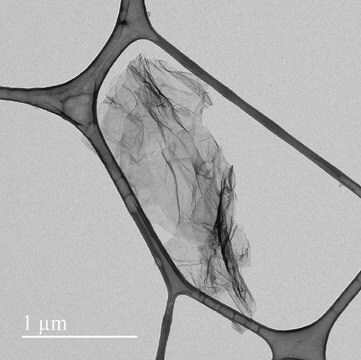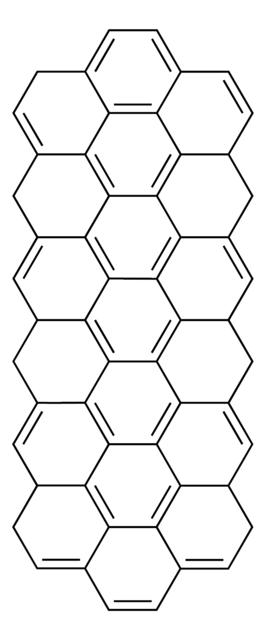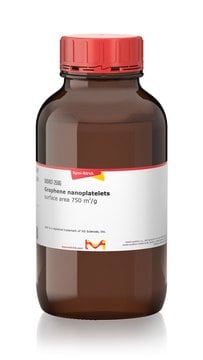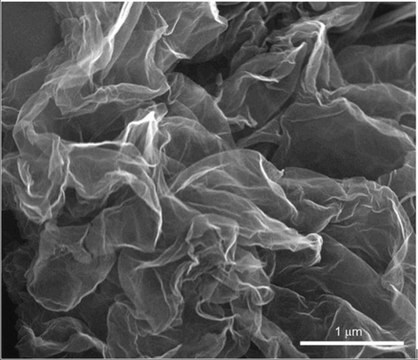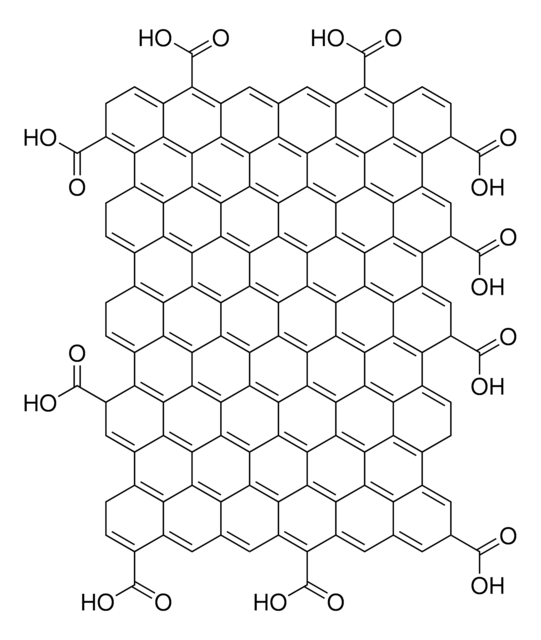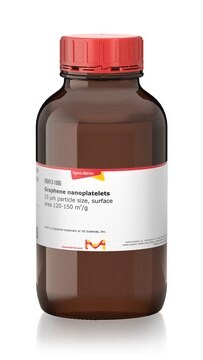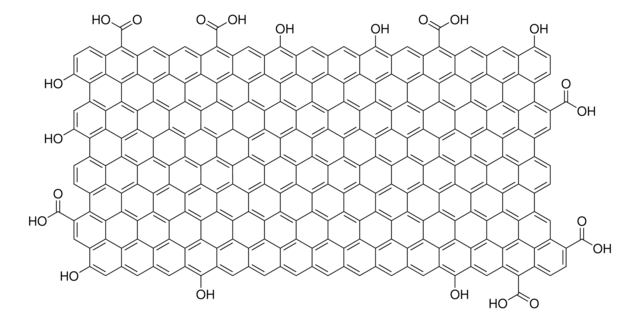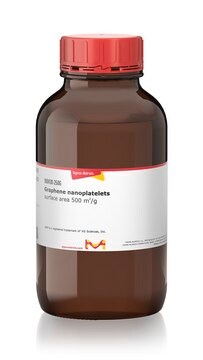Wichtige Dokumente
922676
Graphene nanoribbon
oxidatively splitted from CNT
Synonym(e):
GNRs, Graphene nanoribbon made by oxidative splitting of CNT
About This Item
Empfohlene Produkte
Beschreibung
Made by oxidative splitting of CNT
Qualitätsniveau
Assay
≥80% carbon basis (EA)
Größe
≥0.0002 mm , Nanoribbon
Breite
≥200 nm , Nanoribbon
SMILES String
NC.NC.NC.NC.NC.NC.NC.NC.NC
InChI
1S/9CH5N/c9*1-2/h9*2H2,1H3
InChIKey
DXIFQVRACSPGSU-UHFFFAOYSA-N
Suchen Sie nach ähnlichen Produkten? Aufrufen Leitfaden zum Produktvergleich
Verwandte Kategorien
Allgemeine Beschreibung
Anwendung
Lagerklassenschlüssel
11 - Combustible Solids
WGK
WGK 3
Flammpunkt (°F)
Not applicable
Flammpunkt (°C)
Not applicable
Hier finden Sie alle aktuellen Versionen:
Analysenzertifikate (COA)
It looks like we've run into a problem, but you can still download Certificates of Analysis from our Dokumente section.
Wenn Sie Hilfe benötigen, wenden Sie sich bitte an Kundensupport
Besitzen Sie dieses Produkt bereits?
In der Dokumentenbibliothek finden Sie die Dokumentation zu den Produkten, die Sie kürzlich erworben haben.
Global Trade Item Number
| SKU | GTIN |
|---|---|
| 922676-100MG | 4065266871647 |
Unser Team von Wissenschaftlern verfügt über Erfahrung in allen Forschungsbereichen einschließlich Life Science, Materialwissenschaften, chemischer Synthese, Chromatographie, Analytik und vielen mehr..
Setzen Sie sich mit dem technischen Dienst in Verbindung.